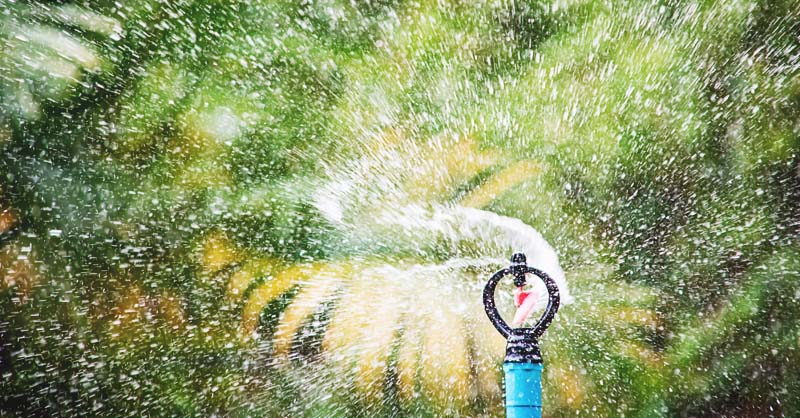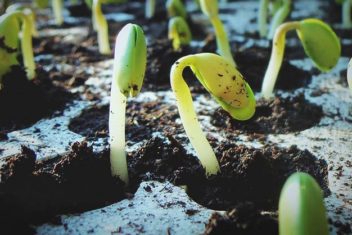Are you on the hunt for the perfect irrigation system?
Choosing the right irrigation system is a big decision, and you should have all the information before making such an investment.
I was searching approximately one year ago for the perfect irrigation system and found the rotor irrigation system. It has worked well for our set-up, and I want to share some of the basics with you to help you learn more about it.
Plus, the information should let you know if this system will work well for your situation and help you make an informed decision.
Here’s what you should know about a rotor irrigation system:
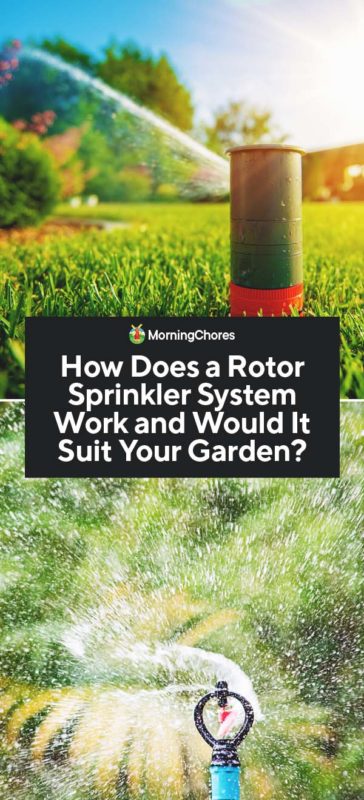
What Is a Rotor Irrigation System?
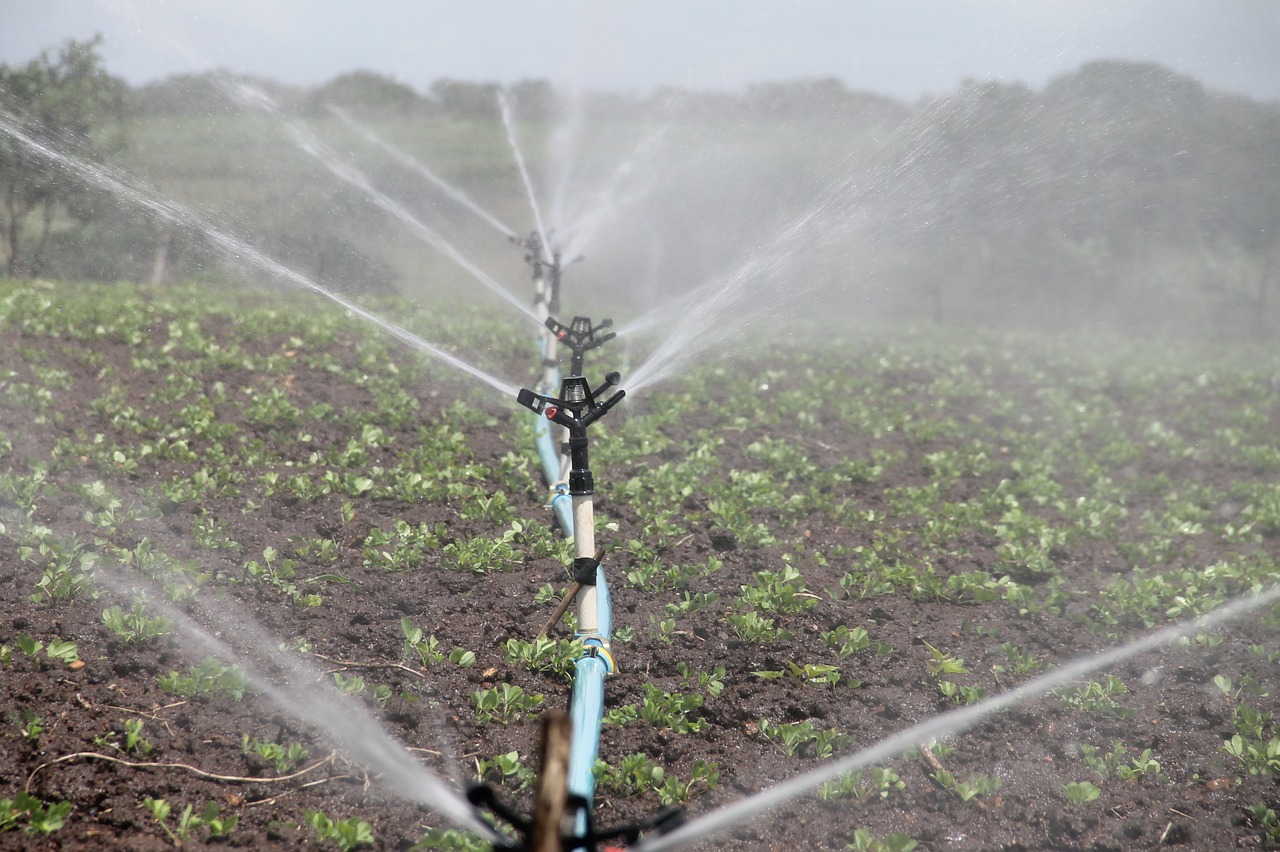
A rotor irrigation system is a set of sprinklers where water is rotated through the sprinkler head and onto your lawn or garden.
The installation is simple because you purchase the heads and push them into the ground into their proper space.
However, the design is where things can become complicated because you must choose different sprinklers, each with a different radius to ensure your entire garden will be watered.
The sprinklers can be spaced anywhere from 18 to 55 feet apart. The farther apart they are, the more water pressure they require.
The water pressure should be higher than the amount of space between sprinklers. If you must have more than 45 feet between sprinklers, it’s a good idea to have someone professionally design and install them for you.
Finding the appropriate water pressure and making sure all the rotor sprinklers water each area properly, can become challenging at these distances.
As a general rule of thumb, you’ll know your system is installed correctly if the water from one head can hit the next head over from every angle.
If you need a wide range of area watered and an easy system to install, this could be the irrigation system you require.
How Does a Rotor Irrigation System Work?
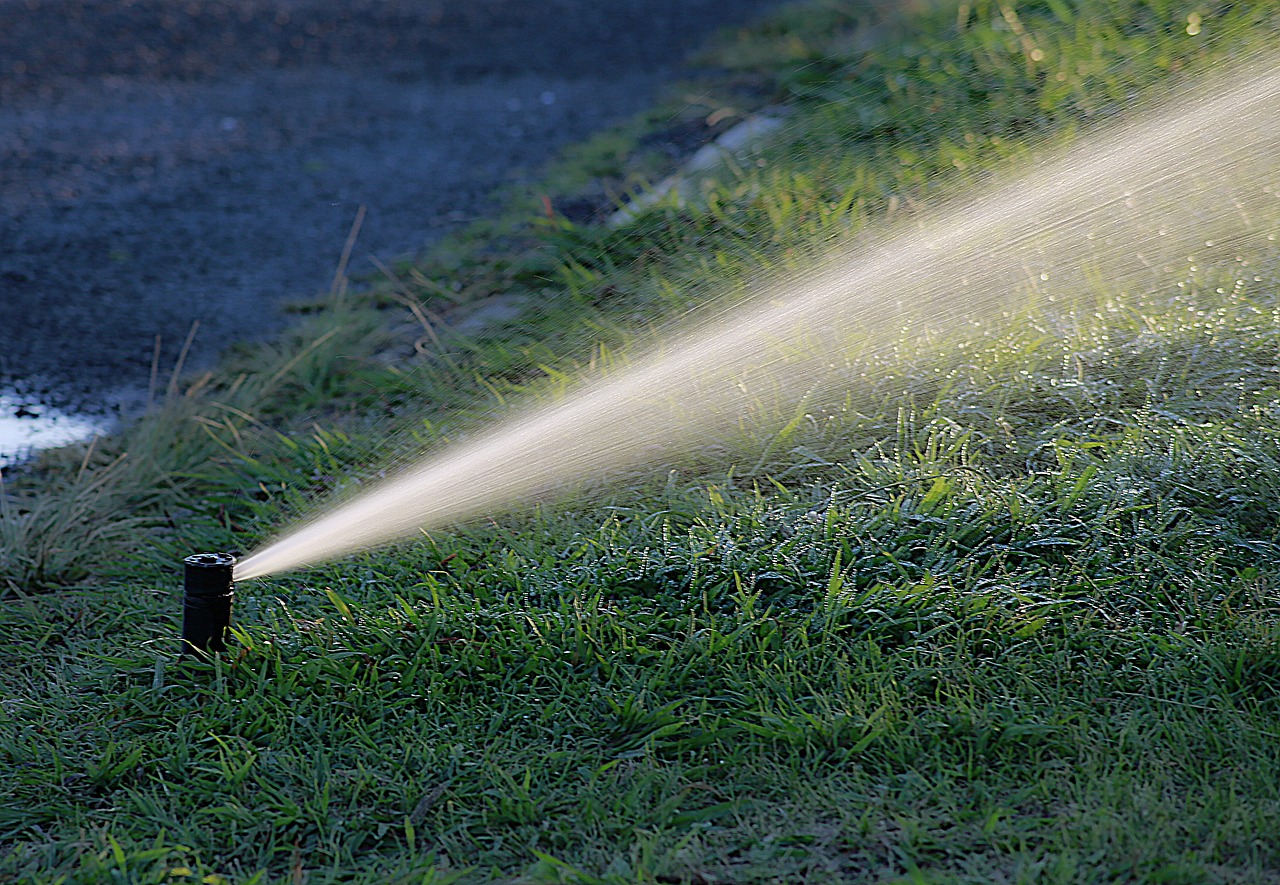
Though rotor irrigation systems are easy to install, it’s important to know how they work. They’re a simple system to understand which makes troubleshooting them easy too.
A rotor irrigation system starts with water entering the sprinkler from the water source. The water runs through a filter and flows through a turbine.
The flow of the water causes the turbine to move and causes the gears in the sprinkler to rotate. The water travels up the sprinkler and out into your garden.
Rotor irrigation sprinklers have a vital screw in the system known as the radius reduction screw.
It’s the screw which holds the nozzle in place on the sprinkler. Many people will turn this screw assuming it will help make each sprinkler share a similar water pattern which is difficult to do without proper training.
However, this screw can be used to increase the distance the sprinkler can cover or decrease the radius the nozzle can spray.
You should only use this screw to control the radius of the sprinkler.
A Few Tips for Rotor Irrigation
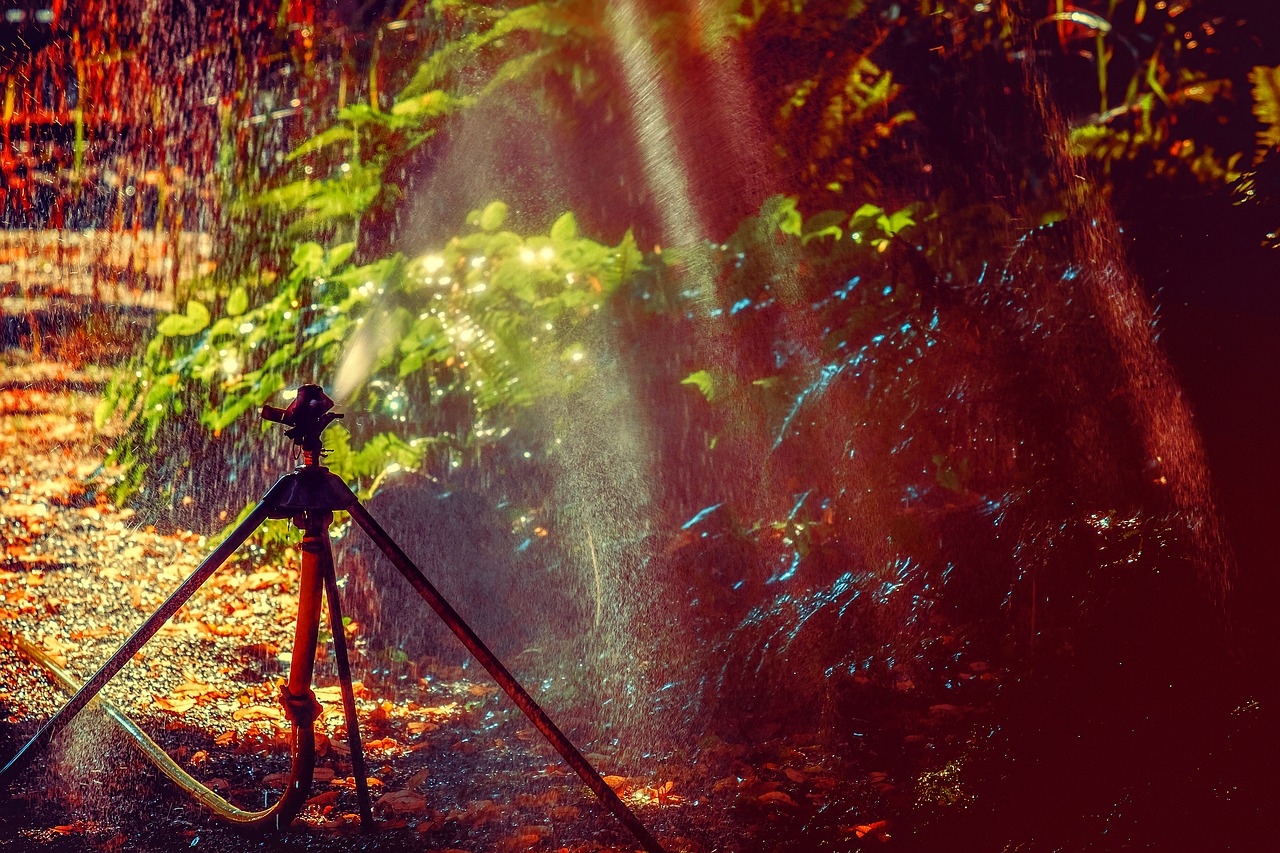
Rotor irrigation appears straight-forward, and it is for the most part. There are a few handy tips which can help you have a positive experience when using this system. Here’s what you should know:
1. Your System Should Include Multiple Sizes
When deciding on a rotor irrigation system, you don’t go to the store, pick up a few nozzles, and call it done.
You should have a variety of nozzles with different radiuses included in your system. This will make the system more effective and be able to water the entire designated area.
Read the package instructions on the sprinklers you choose. It should tell you what the expected radius for the nozzle is.
Keep in mind, some manufacturers tend to overshoot the power of their product. If you have a specific radius which must be covered to complete your system, and you can’t find it exactly, go up a size.
You can use the radius reduction screw to drop the water stream if needed. It’s important to make sure you have one size of nozzle per arc in your system.
2. Water Earlier
What turns many people away from a rotor system is it waters from overhead. If you’ve been into gardening for long, you know overhead watering is easier on the gardener, but it can birth diseases in your plants.
Most of the time, diseases form on your plants because of lack of ventilation and water being locked into the area with no place to go.
If you water your crops earlier in the day, it gives them a long enough time in the sun for the water to evaporate from the foliage of the plant.
3. Troubleshooting the Radius Reduction Screw
You’ll know you have a water pressure issue when you see a donut pattern in your watering area. The water will make a circle a few feet from the sprinkler, leave a dry space, and make another ring.
Use the radius reduction screw to interrupt the water flow. This will force water to hit closer to the sprinkler and avoid the dry patch.
If you see a dry patch between two rotor sprinklers, but there’s no pattern, you don’t have a water pressure issue.
Instead, the sprinklers are too far apart. Move them closer together, and it should solve the problem. It could also be the radius reduction screw is interrupting the water flow too much.
Unscrew it to where it moves out of the water flow, and the problem should work itself out.
Benefits of Rotor Irrigation
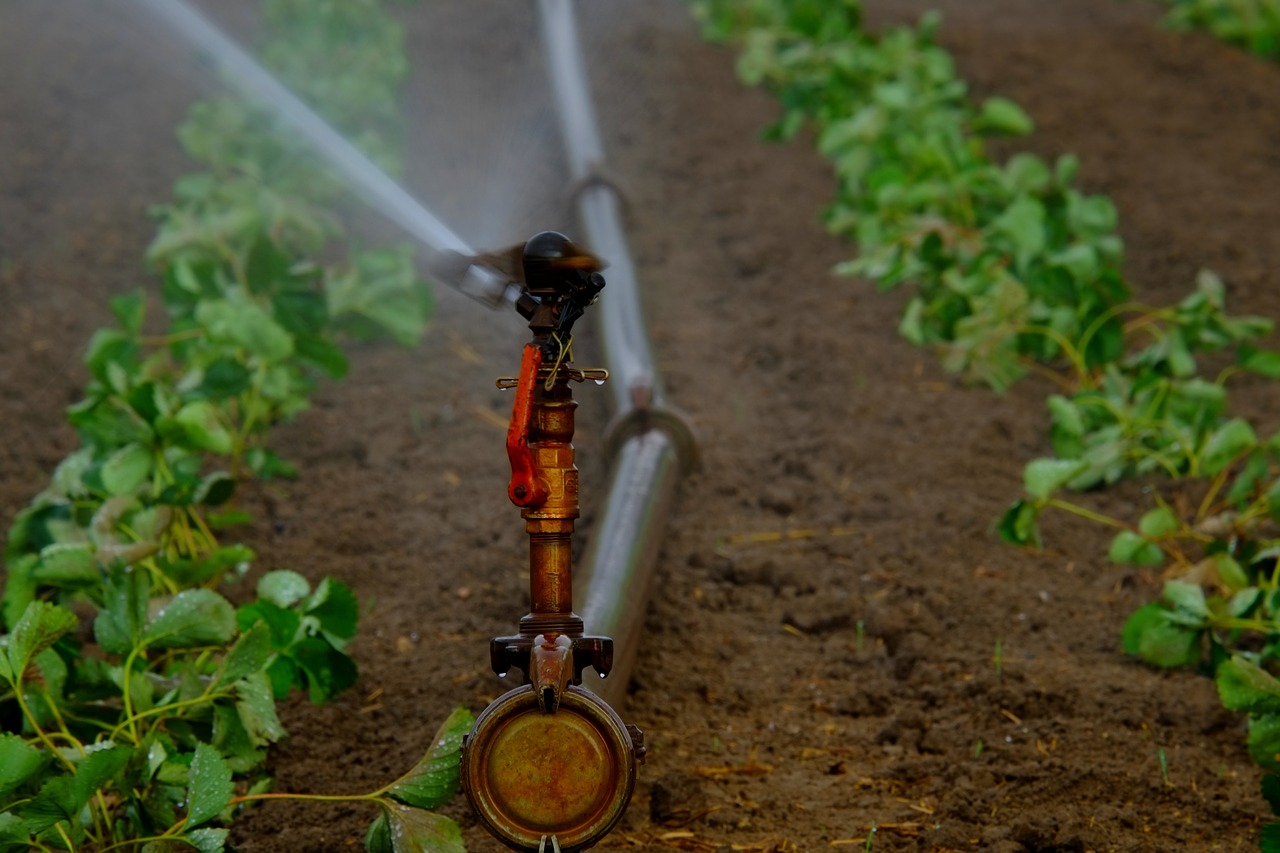
With everything in life, there are positives and negatives. Here are the pros of a rotor irrigation system:
1. Good for Large Gardens
I love the rotor irrigation system because it works well for extensive gardens. We have two large gardens, and it can be challenging to find a watering system which will cover everything.
When choosing a rotor irrigation system, it will cover your entire garden, if designed correctly.
2. Distributes Water Equally
There are some irrigation systems which tend to put more water in certain areas and leave other areas dry.
A rotor irrigation system will equally cover all areas of your garden. This is a huge bonus because you don’t have to worry about some plants being drowned while others are drying up due to lack of water.
3. Good for Unlevel Ground
Not everyone gardens on flat ground. Some people have no flat space on their land. If this is your gardening situation, you’re a perfect candidate for a rotor irrigation system.
The way water is distributed through this system, the soil on a slope can absorb the water before more is added. Therefore, avoiding a runoff.
4. Less Maintenance
One of the greatest concerns when installing an irrigation system is the system becoming clogged. This isn’t a concern when choosing a rotor irrigation system.
The way the rotor sprinkler is designed, it’s able to push clogs through the sprinkler system.
The Drawbacks
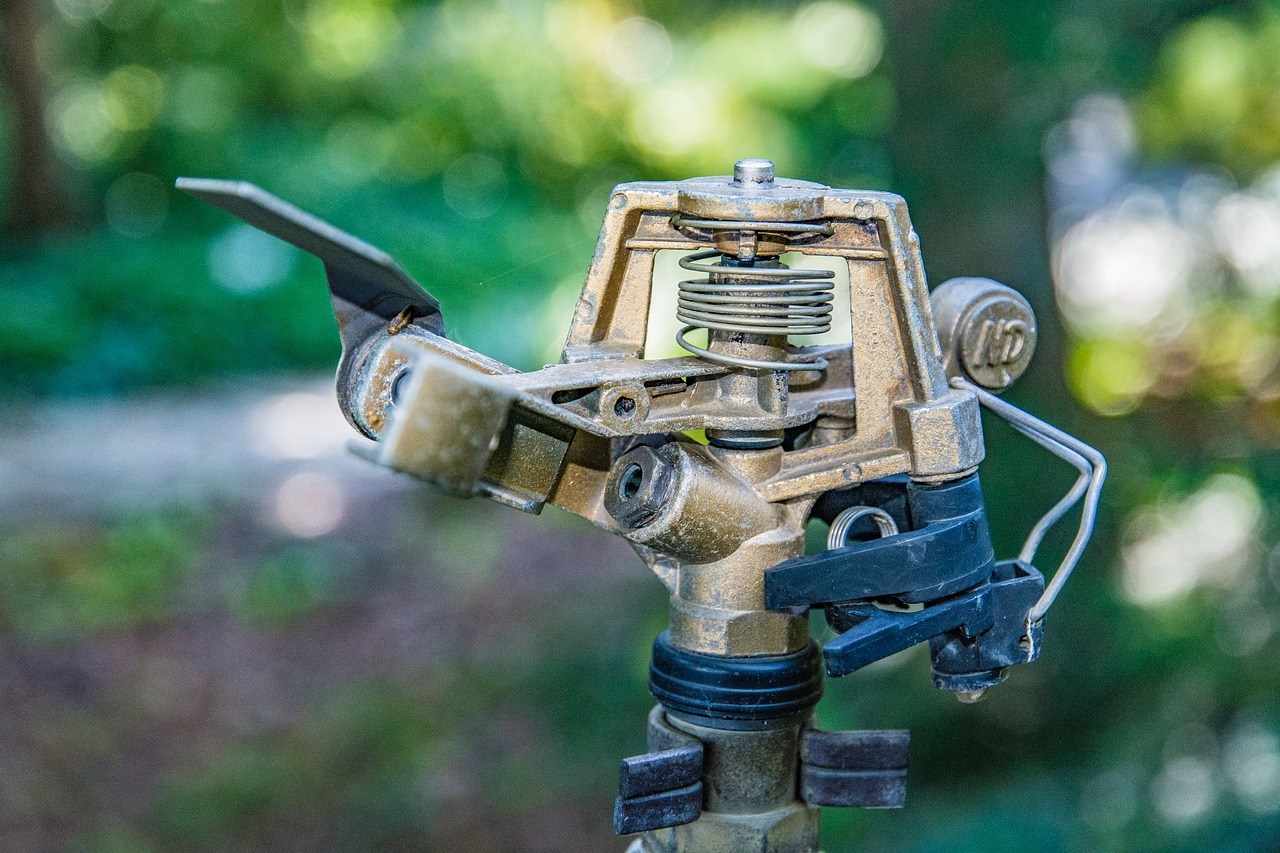
1. Installation is Simple Yet Not
When installing a rotor irrigation system, it appears simple at first glance (and in many ways it is.) Yet, there are spacing concerns you must address.
Plus, when the sprinklers are in the ground, you must get the nozzles heading in the right direction. You won’t know this until you turn the system on and try to use it for the first time.
It can take a few tries to get your rotor irrigation system working as you’d like it to.
2. Cost More Than Other Systems
This style of irrigation system can be more expensive than other irrigation types. Due to the large amounts of space between each sprinkler, it requires more materials to have the proper set-up.
The more materials you need towards a system, the more expensive it gets.
Types of Rotor Irrigation Systems
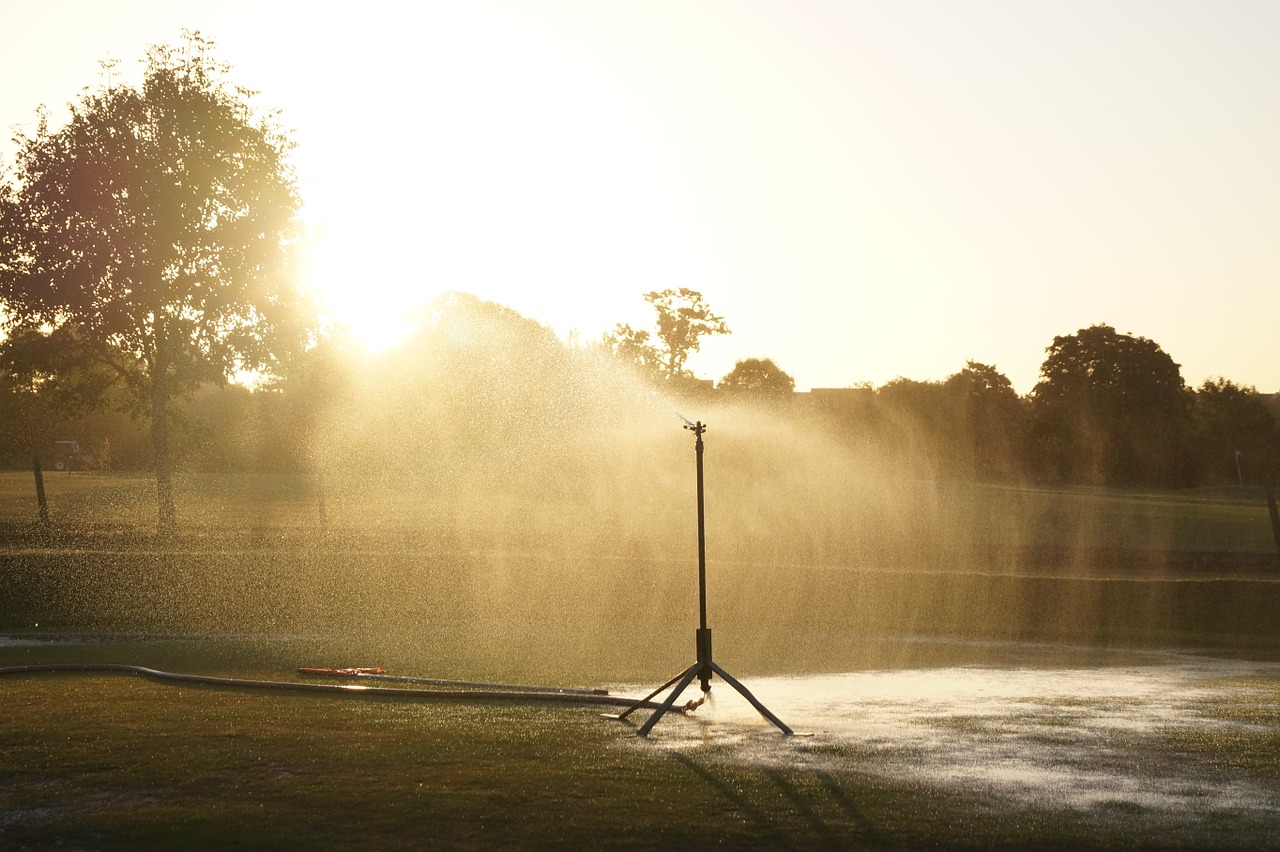
1. Pop-Up Rotor Irrigation System
Pop-up rotor sprinklers are installed below the ground. They raise up when in use and when complete, they’re forced back into the ground automatically.
This type of system works well for heavily traveled areas because they’re not as much of a tripping hazard.
Plus, it doesn’t take away from the look of your property because this style of system is only seen when in use.
A very practical irrigation system for watering lawns, it can be used in the home garden and is a great choice for maintaining a commercial lawn as well.
2. Shrub-Style Rotor Irrigation System
If you have an area of your yard which needs water, but it’s densely planted, this style of irrigation would work best.
You can push the sprinklers into the ground or install them on a pipe. This isn’t an ideal set-up for areas where people commonly walk because it’s a huge tripping hazard.
However, they’re a great option for watering large areas. You can choose different styles of heads for this type of rotor system.
If using this style of system to water a larger area, you’ll most likely need someone to help you design it and fit the right heads on your system to meet your needs because the options are many.
This is the style of rotor irrigation systems commonly seen on sports fields because of their ability to be moved around the field and water adequately too.
There are even options for this style of rotor irrigation system to move on its own. You’ll obviously pay a premium price for this type of convenience.
You now have a better understanding of a rotor irrigation system. By knowing what it is, how it works, different types, and a few tips we gave you, you’ll be able to select the best option for your garden.

